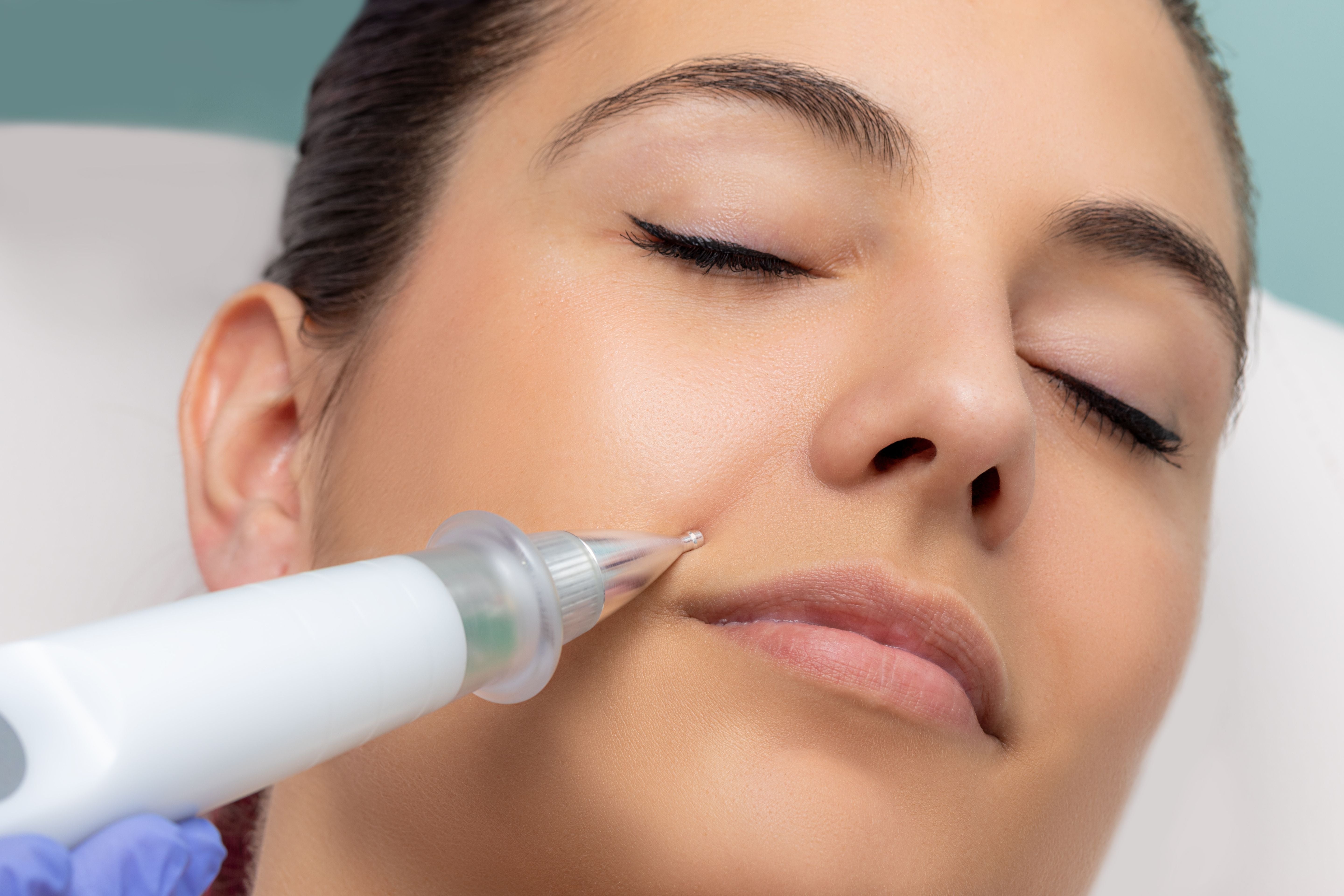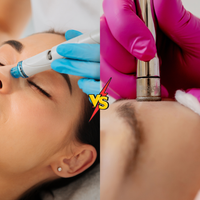Aging is inevitable, but we don't have to take every wrinkle and line lying down. From creams to peels to lasers to microneedling, the anti-aging skincare market provides a diverse array of products and services. Among the more recent newcomers to the scene is the Plasma Pen, a device touted as being able to smooth out wrinkles and fine lines without surgery. So what is this pen-shaped device and how does it work?
Today we will explore in depth the science behind the Plasma Pen, the way it erases fine lines and wrinkles, the treatment process itself, the expected outcome, the aftercare and who it is ideal for. Whether you are a skincare expert, a curious client or a practitioner looking to learn more about the treatments available, this guide answers all you need to know.
What Is a Plasma Pen?
The Plasma Pen is a hand-held cosmetic device for the purposes of skin rejuvenating and tightening without surgery. This device applies the plasma fibroblast treatment technique, aimed directly at the skin layer where the elastin and collagen are produced through the cells called fibroblasts.
Differing from lasers or microneedling, the Plasma Pen employs ionized gas (plasma) to make micro-injuries to the outer layer of the skin without actually touching it. Producing an electrical arc that influences the atmospheric gas between the tip of the pen and the skin, the Plasma Pen shrinks the targeted skin tissue instantly and triggers the body's natural healing process.
How Plasma Rejuvenates the Skin: The Science Behind It
In order to comprehend the way the Plasma Pen corrects wrinkles and fine lines, it is beneficial to recognize the reason they actually happen in the first place. Wrinkles happen whenever collagen and elastin fibers within the skin begin deteriorating as a result of advanced age, sun exposure, and external trauma. While the structural proteins are diminished, skin gets thinner and looser and more susceptible to creasing.
The Plasma Pen reverses the process through a method referred to as controlled thermal trauma. By the time the tip of the pen emits plasma energy at the skin's very surface, it produces microscopic injuries that:
Fibroblasts are the cells used to form new collagen and elastin. They are activated to regenerate tissue by plasma energy.
Causes Skin Contraction: The arc contracts the superficial skin layer (epidermis) and tightens it instantly, providing immediate firming effects.
Promote Regeneration: During the subsequent weeks, the skin will experience a process of regeneration to result in thicker and firmer skin with a smoother texture.
What Areas Can the Plasma Pen Treat?
Though wrinkle removal is its most common application, the Plasma Pen is very versatile. It can also target other areas on the face and body, such as
•Crow's feet at the eyes
•Pronounced wrinkles
•Frown Lines (Glabellar Lines)
•Smile lines or nasolabial
•Upper and lower eyelids (non-surgical blepharoplasty)
•Necklines and loose skin beneath the chin
•Acne scars and stretch marks
It is especially good at treating sensitive areas—such as the eyelids—where other lasers can be too harsh.
The Plasma Pen Treatment Process Step-by-Step
If you're considering Plasma Pen treatment, here's what a typical session looks like:
1. Consultation
The treatment starts with a consultation to determine your skin type and concerns and your suitability for the treatment. Not all people are ideal candidates—those with darker complexions or skin conditions may need to stay away from it since they risk hyperpigmentation.
2. Numbing
A topical anesthetic is used in the targeted area the day of the treatment to reduce pain. The numbing cream can take anywhere from 30-45 minutes to work.
3. Plasma Pen Use
The practitioner holds the pen a fraction of an inch above the skin and fires a series of controlled arcs of plasma. They produce small brown "spots" (carbon crusts) on the skin in a grid pattern. The treatment time can take anywhere from 30 minutes to more than an hour depending on the size of the area being treated.
4. Post-Treatment
Following the treatment, you might find swelling and reddening of the skin in a manner that feels akin to a sunburn. Carbon crusts will take a couple of days to shed off naturally from the skin.
What Are The Expected Results?
One of the greatest benefits of the Plasma Pen is the very noticeable skin tightening immediately post-treatment, with many patients seeing the effects right away. The effects build up over the course of the subsequent 8-12 weeks as your new collagen and elastin are produced.
They include:
•Smoother skin texture
•Decreased visibility of fine wrinkles and deeper wrinkles
•Tighter, firmer skin
•Lighter, more uniform complexion
Results can potentially endure up to three years depending upon lifestyle, skin care regimen, and skin aging type. Clients frequently get the treatment done every 1-2 years to refurbish the effects.
Downtime and Aftercare
While non-invasive, Plasma Pen treatments do require recuperation time. This is what you can anticipate when recuperating:
Immediate Side Effects:
•Redness and swelling (particularly within the eyes)
•Tiny carbon dot-sized scabs
•Mild tenderness or tightness
Healing Timeline
Days 1-3: Swelling will reach its height. Avoid wetting or touching the treated area.
Days 4-7: Carbon crusts naturally shed and begin falling off.
Week 2-4: The redness subsides; skin starts to normalize.
6-12 weeks: Final outcomes are apparent.
Aftercare Tips:
•Avoid picking or scratching the crusts.
•Avoid sun exposure and always wear SPF.
•Keep the surrounding area dry and clean.
•Use only recommended post-care products (no exfoliants or acids).
Proper after-care is important to avert infection, scarring, or pigmentation complications.
What Is a Good Candidate?
The Plasma Pen is ideal for those who:
•Have fair to medium skin tones (Fitzpatrick I-III)
•Starting to show signs of aging (fine wrinkles and mild to moderate wrinkles)
•Want laser or surgical tightening without the resulting downtime
•Are in good general health and do not have a current skin infection
It's not recommended for:
•Pregnant and breastfeeding women
•Individuals with darker skin types (post-inflammatory hyperpigmentation risk)
•Individuals with autoimmune diseases or impaired healing
You should always consult a qualified and seasoned practitioner to see if it's appropriate for you.
Plasma Pen vs. Alternative Treatment Options
| Treatment | Invasiveness | DowntimeDowntime | Suitable Areas | Duration of Results |
| Plasma Pen | Non-invasive | 7–10 days | Face, eyelids, neck | 2–3 years |
| Botox | Minimally invasive | None | Forehead, eyes | 3–6 months |
| Laser Resurfacing | Invasive | 1–2 weeks | Face | 1–2 years |
| Microneedling | Minimally invasive | 2–3 days | Face | 6–12 months |
Final Thoughts
The Plasma Pen is the latest breakthrough in aesthetic innovation. Using the energy of plasma, this device provides a targeted yet risk-free way to smooth out wrinkles, fine lines, and loose skin without the need to get under the knife. Like any aesthetic treatment, the outcome will rely on the skill of the practitioner, your skin type, and your post-treatment skin care regime. But with the Plasma Pen, many get the glow-up they've been looking for with minimal fuss and stunning longevity. If you're ready to bid adieu to fine lines and hello to a firmer complexion, a Plasma Pen treatment may be the missing key in your skincare routine.








0 comments